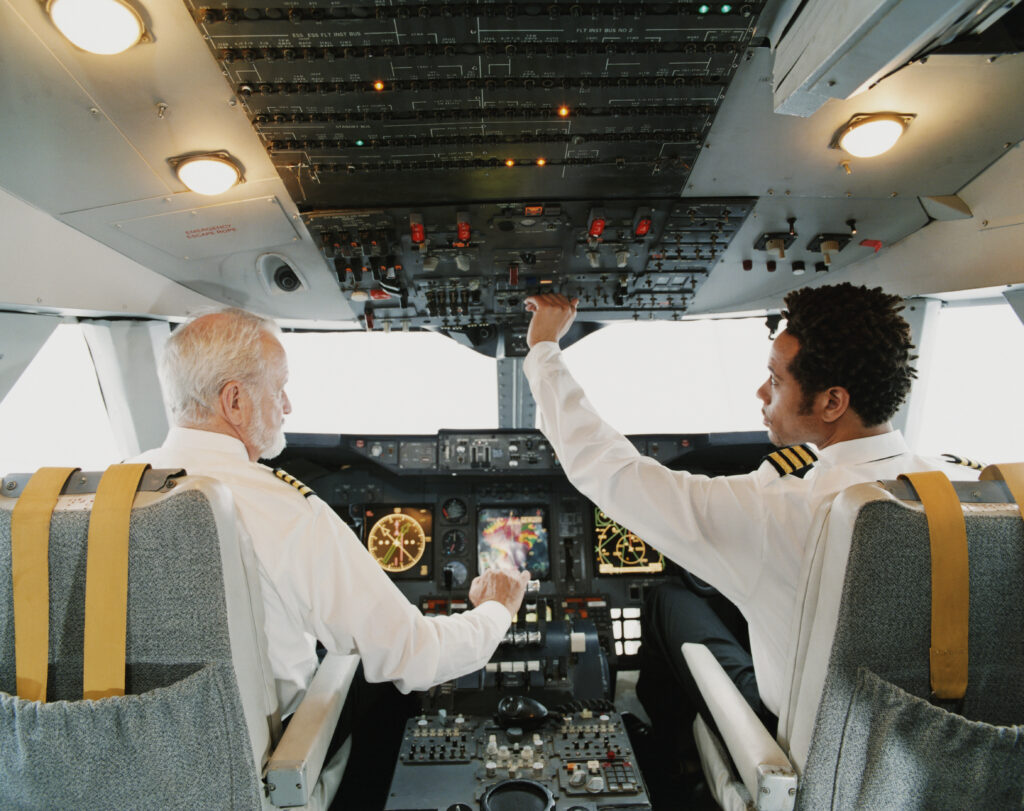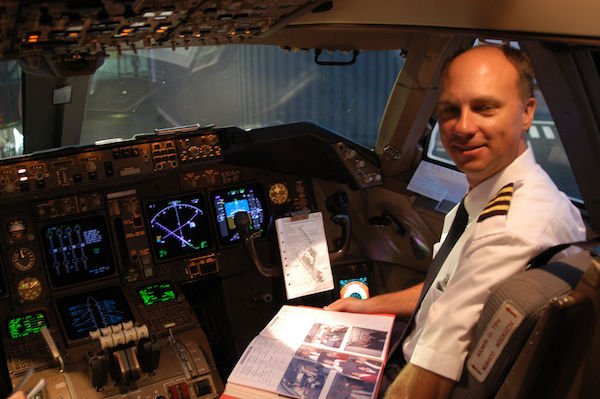
Have you ever wondered how long it takes to become a commercial pilot, especially if you have no prior experience in aviation? If so, you’re in the right place. Becoming a commercial pilot is not a quick or easy process, but it is definitely achievable for those who are willing to put in the time and effort. In this article, we will dive into the details of what it takes to become a commercial pilot with no experience and give you a better understanding of the timeline involved.
Becoming a commercial pilot with no experience typically involves several steps and years of training. The first step is obtaining a private pilot license (PPL), which usually takes around 3-6 months. This license allows you to fly for recreational purposes and is the foundation for further training. After obtaining a PPL, the next step is to obtain an instrument rating (IR), which enables you to fly in poor visibility conditions using only the instruments in the aircraft. The IR training usually takes around 3-6 months as well.
Once you have acquired your PPL and IR, the next phase of training is the commercial pilot license (CPL) program. This program involves a more in-depth training in various aspects of flying, such as navigation, flight planning, and aviation regulations. The CPL training typically takes around 6-9 months to complete. Additionally, aspiring commercial pilots must also accumulate a specific number of flight hours, which can range from 200 to 250 hours, depending on the country’s regulations.
In conclusion, becoming a commercial pilot with no experience is a process that requires dedication, time, and financial investment. The timeline to obtain all the necessary licenses and certifications can vary but typically ranges from 2 to 3 years. However, it is important to remember that everyone’s journey is unique, and the time it takes to become a commercial pilot may vary from person to person. With the right commitment and passion for aviation, you can turn your dream of becoming a commercial pilot into a reality. Becoming a commercial pilot requires dedication, commitment, and a passion for aviation. If you have no previous experience in flying, the journey to becoming a commercial pilot may seem daunting. However, with the right training programs and a solid understanding of the requirements, you can embark on this exciting career path. In this article, we will explore the various requirements, training programs, flight hour requirements, timeline, additional certifications, costs, and career opportunities associated with becoming a commercial pilot with no experience.

Requirements for Becoming a Commercial Pilot
Minimum Age Requirement
The first requirement for becoming a commercial pilot is meeting the minimum age requirement. In most countries, the minimum age to obtain a commercial pilot license is 18 years. However, it is important to note that some aviation authorities may have slight variations in the age requirement, so it is essential to research and understand the specific regulations in your country.
Education and Qualifications
To become a commercial pilot, a high school diploma or equivalent is usually required. While a specific degree is not mandatory, having a background in aviation or a related field can be advantageous. Many aspiring pilots choose to pursue a Bachelor’s degree in aviation or aeronautical science to gain a deeper understanding of the industry and enhance their job prospects.
Physical Fitness and Medical Requirements
Physical fitness and medical requirements are essential for aspiring commercial pilots. Aviation authorities mandate that pilots hold a valid aviation medical certificate. This certificate ensures that pilots do not have any medical conditions that can affect their ability to fly safely. The specific medical requirements may vary depending on the country and the class of medical certificate required.
Training Programs for Aspiring Pilots
Private Pilot License Training
The journey to becoming a commercial pilot typically begins with obtaining a private pilot license (PPL). This training program focuses on providing aspiring pilots with the foundational knowledge and skills required for safe and proficient flying. The PPL training includes theoretical study, practical flight lessons, and solo flight hours.
Instrument Rating Training
Once you have obtained your PPL, the next step is to pursue an instrument rating. An instrument rating allows pilots to fly in poor visibility and adverse weather conditions. This training program includes theoretical study, simulator sessions, and flight lessons focused on navigation, instrument interpretation, and flying solely based on instruments.
Commercial Pilot License Training
After acquiring an instrument rating, aspiring pilots can proceed with the commercial pilot license (CPL) training. The CPL training program builds upon the skills and knowledge acquired during the PPL and instrument rating training. The training includes advanced flight lessons, cross-country flights, night flights, and emergency procedures.
Multi-Engine Rating Training
To fly multi-engine aircraft, pilots must obtain a multi-engine rating. This training program allows pilots to gain the necessary skills to safely operate and maneuver aircraft with multiple engines. The training focuses on engine management, handling characteristics, and emergency procedures specific to multi-engine aircraft.
Flight Hour Requirements
Minimum Flight Hour Requirement
Aviation authorities set minimum flight hour requirements for obtaining a commercial pilot license. Although the specific requirements may vary, a typical minimum flight hour requirement is around 250 to 300 hours. These flight hours include both solo flight and instructor-supervised flight time.
Solo Flight Hours
During your training, you will be required to accumulate a certain number of solo flight hours. Solo flight hours are crucial for developing confidence, decision-making abilities, and handling the aircraft independently. The specific number of solo flight hours varies depending on the training program and aviation authority regulations.
Cross-Country Flight Hours
Cross-country flight hours are an essential part of commercial pilot training. These flight hours involve planning and executing flights over long distances. Cross-country flights allow aspiring pilots to develop navigation skills, hone their decision-making abilities, and gain experience in different types of airspace.
Night Flight Hours
To become a commercial pilot, you must also accumulate a certain number of night flight hours. Night flights provide valuable experience in flying under low light conditions. Night flight training focuses on navigation, aircraft lighting systems, and emergency procedures specific to nighttime operations.
Instrument Flight Hours
Instrument flight hours are a requirement for obtaining an instrument rating, but they also play a crucial role in the overall flight hour requirements for commercial pilots. Instrument flight hours involve flying solely based on instruments and developing proficiency in instrument interpretation and navigation.
Typical Timeline for Becoming a Commercial Pilot
Private Pilot License: Time Frame
The time frame for obtaining a private pilot license varies depending on various factors such as the frequency of flight lessons, weather conditions, and individual aptitude. On average, it can take approximately 4-6 months to complete the PPL training program.
Instrument Rating: Time Frame
The instrument rating training program typically takes about 2-3 months to complete. However, the duration can vary based on factors such as the training schedule, individual progress, and weather conditions.
Commercial Pilot License: Time Frame
Completing the commercial pilot license training program usually takes around 6-8 months. This duration includes the advanced flight lessons, cross-country flights, night flights, and emergency procedures necessary for commercial pilot certification.
Multi-Engine Rating: Time Frame
The multi-engine rating training program generally takes an additional 1-2 months to complete. This duration includes the theoretical study, simulator sessions, and flight lessons specifically focused on multi-engine aircraft.

Additional Certifications and Training
Certified Flight Instructor (CFI)
After obtaining a commercial pilot license, many pilots choose to pursue additional certifications such as becoming a certified flight instructor (CFI). This certification allows pilots to instruct and train aspiring pilots. Becoming a CFI can enhance your skillset, job prospects, and provide a valuable opportunity for gaining flight hours and experience.
Airline Transport Pilot (ATP) Certification
The Airline Transport Pilot (ATP) certification is the highest level of pilot certification and is required for flying commercial aircraft for airlines. To become eligible for the ATP certification, pilots must meet specific flight hour and experience requirements, including a minimum of 1,500 flight hours.
Factors That May Affect the Timeline
Availability of Training Programs
The availability of training programs can significantly impact the timeline for becoming a commercial pilot. Factors such as the availability of flight instructors, aircraft, and training facilities can affect the scheduling and completion of training programs.
Weather Conditions and Flight Cancellations
Weather conditions play a significant role in pilot training. Adverse weather, especially during practical flight lessons, can lead to flight cancellations and delays in training. It is important to factor in potential weather-related disruptions when estimating the timeline for becoming a commercial pilot.
Dedication and Commitment
The dedication and commitment of the aspiring pilot also affect the timeline. Regular and consistent training, combined with personal study and practice, can expedite the completion of training programs. Conversely, inconsistent training schedules or gaps in studying can extend the overall timeline for becoming a commercial pilot.

Costs Associated with Becoming a Commercial Pilot
Training Fees
The costs associated with becoming a commercial pilot can vary depending on the training program, location, and type of aircraft used. On average, the training fees for obtaining a commercial pilot license can range from $40,000 to $80,000 or more. It is essential to thoroughly research and understand the costs associated with the chosen training program before embarking on your journey.
Licensing and Examination Fees
In addition to training fees, aspiring pilots must also consider licensing and examination fees. These fees can vary depending on the aviation authority and the specific certifications sought. It is important to budget for these expenses when planning to become a commercial pilot.
Additional Costs (Books, Equipment, etc.)
Additional costs such as books, study materials, flight equipment, and uniforms should also be considered. These costs can vary depending on individual preferences, but it is important to budget for these expenses to ensure a successful and well-prepared training experience.
Career Opportunities and Job Prospects for Commercial Pilots
Airline Pilot Positions
One of the most popular career opportunities for commercial pilots is to work as an airline pilot. Airlines offer a wide range of positions, from regional carriers to international airlines. Becoming an airline pilot offers the opportunity for career growth, travel, and competitive compensation.
Charter and Corporate Pilot Positions
Charter and corporate pilot positions provide alternative career paths for commercial pilots. These positions involve flying private aircraft for individuals, corporations, and organizations. Charter and corporate pilots often have the opportunity to fly a variety of aircraft and travel to diverse destinations.
Flight Instructor Positions
Becoming a flight instructor can provide a rewarding career path for commercial pilots. Flight instructors play a crucial role in training and mentoring aspiring pilots. This career path offers the opportunity to build flight hours, gain teaching experience, and contribute to the development of the next generation of aviators.

Conclusion
Becoming a commercial pilot with no previous experience requires dedication, commitment, and a willingness to undergo extensive training programs. The timeline for becoming a commercial pilot can vary based on individual factors, training programs, and the availability of resources. While the journey may be challenging, it offers exciting career opportunities in various sectors of aviation. By meeting the requirements, completing the necessary training programs, and gaining the required flight hours, you can embark on a rewarding career as a commercial pilot.


Leave a Reply